Abstract
Three college students in Experiment 1 and 1 student in Experiment 2 learned visual conditional discriminations under contextual control by tones; the visual comparison stimulus that was correct with a given sample stimulus depended on whether a high tone or a low tone was present. Two of the subjects in Experiment 1 then demonstrated the emergence of two sets of contextually controlled three-member classes of equivalent stimuli, and the subject in Experiment 2 showed the emergence of contextually controlled four-member classes; the class membership of each stimulus varied as a function of the tones. Class membership was demonstrated by the subjects' performance of new conditional discriminations that they had never been taught directly. In Experiment 2, the procedures were intended to ensure that the tones exerted second-order conditional control and did not simply form compounds with each of the visual stimuli, but the subject's verbal description of the tasks suggested that this intention might not have been successful. It could not be ascertained, therefore, whether the tones exerted contextual control as independent second-order conditional stimuli or simply as common elements of auditory-visual stimulus compounds.
Full text
PDF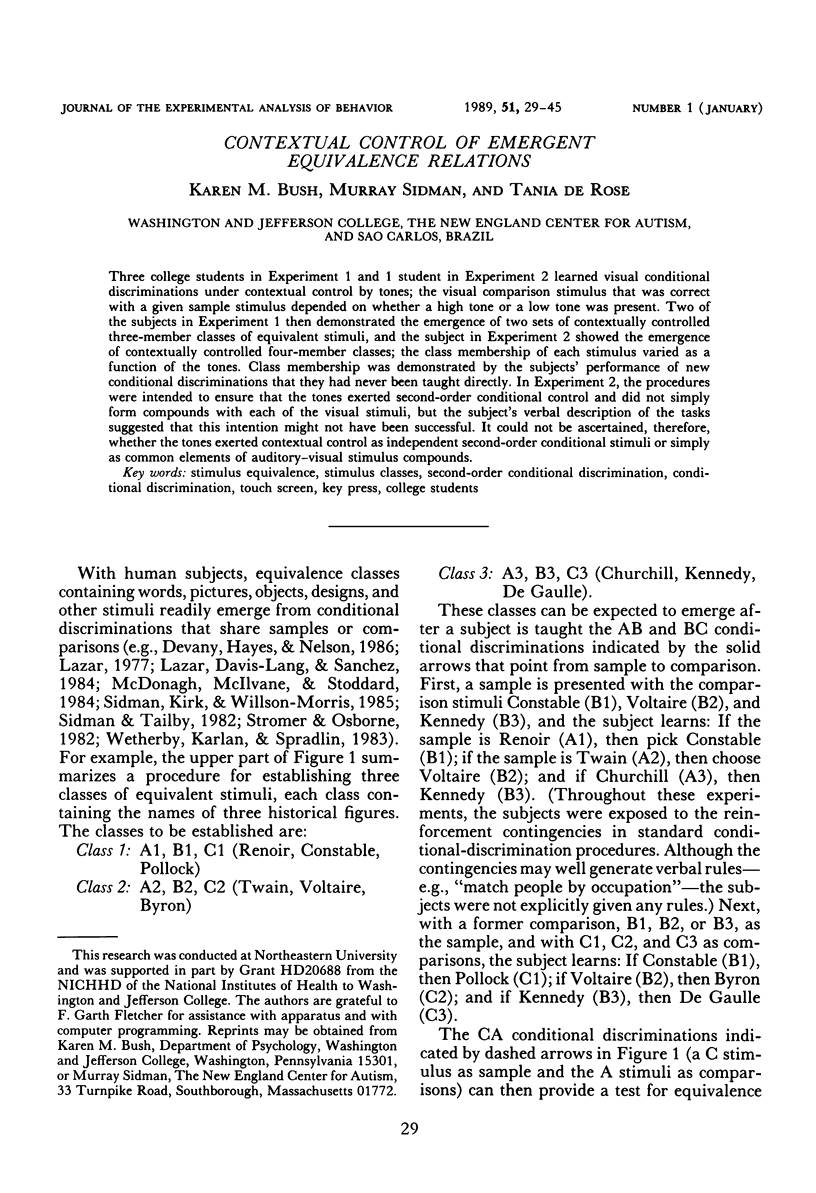



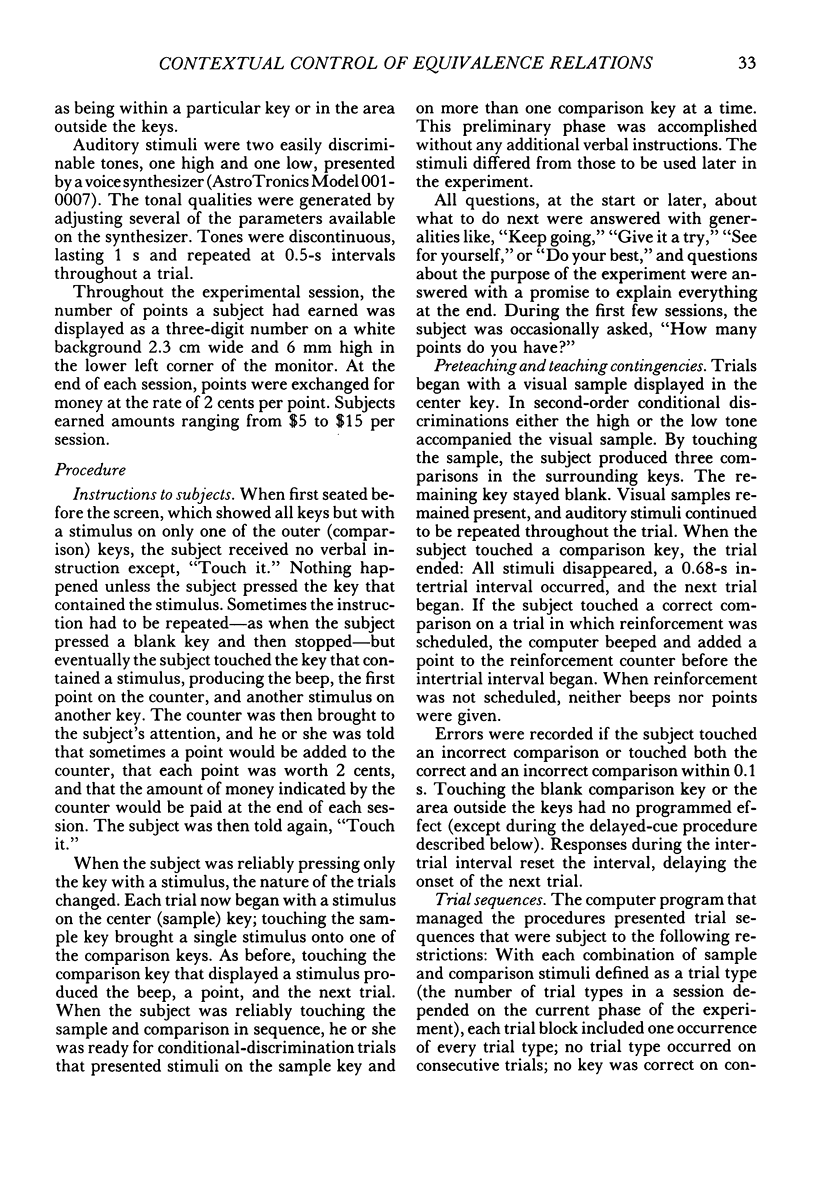
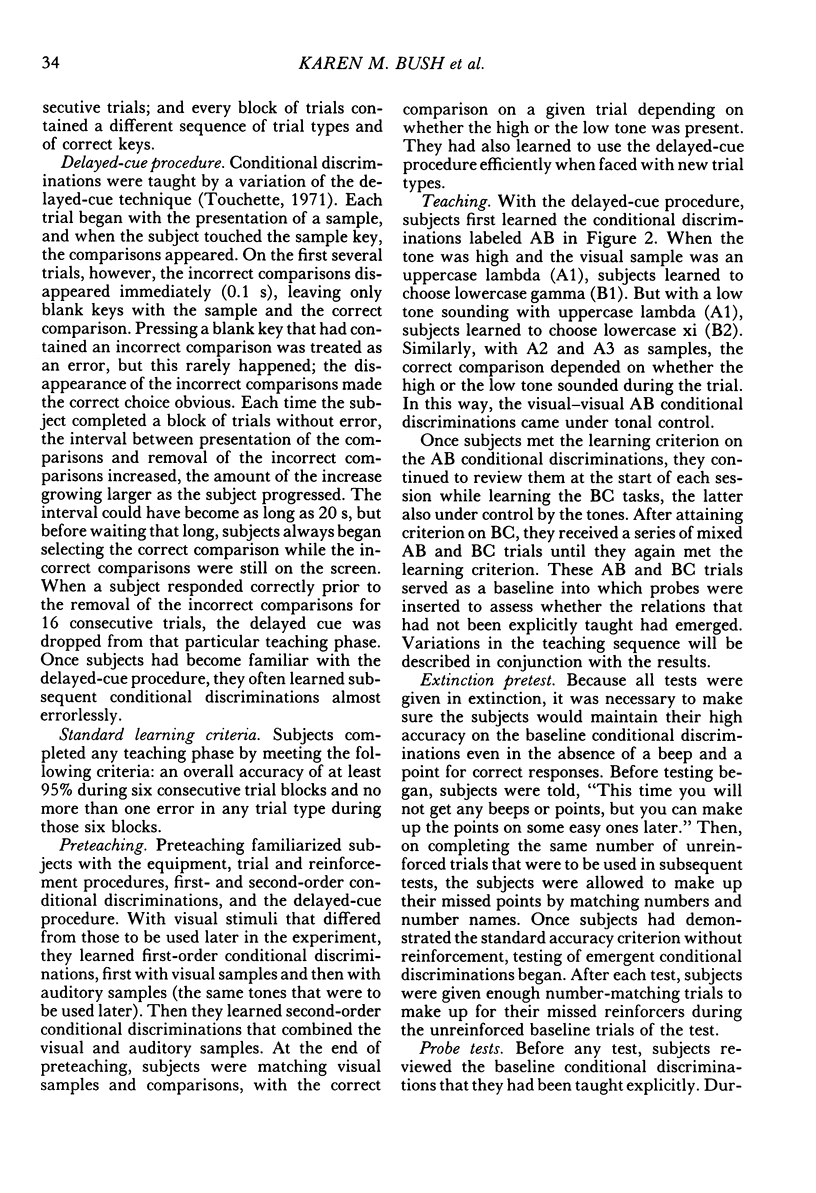
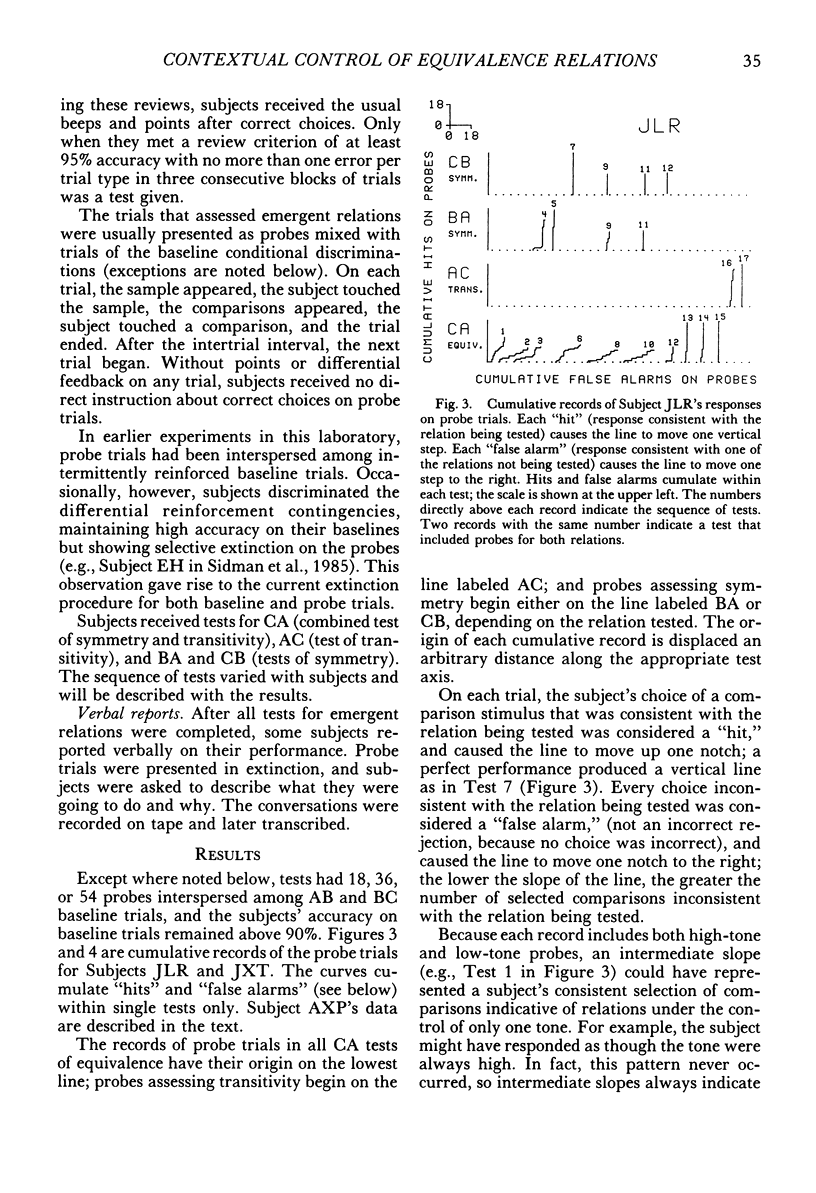



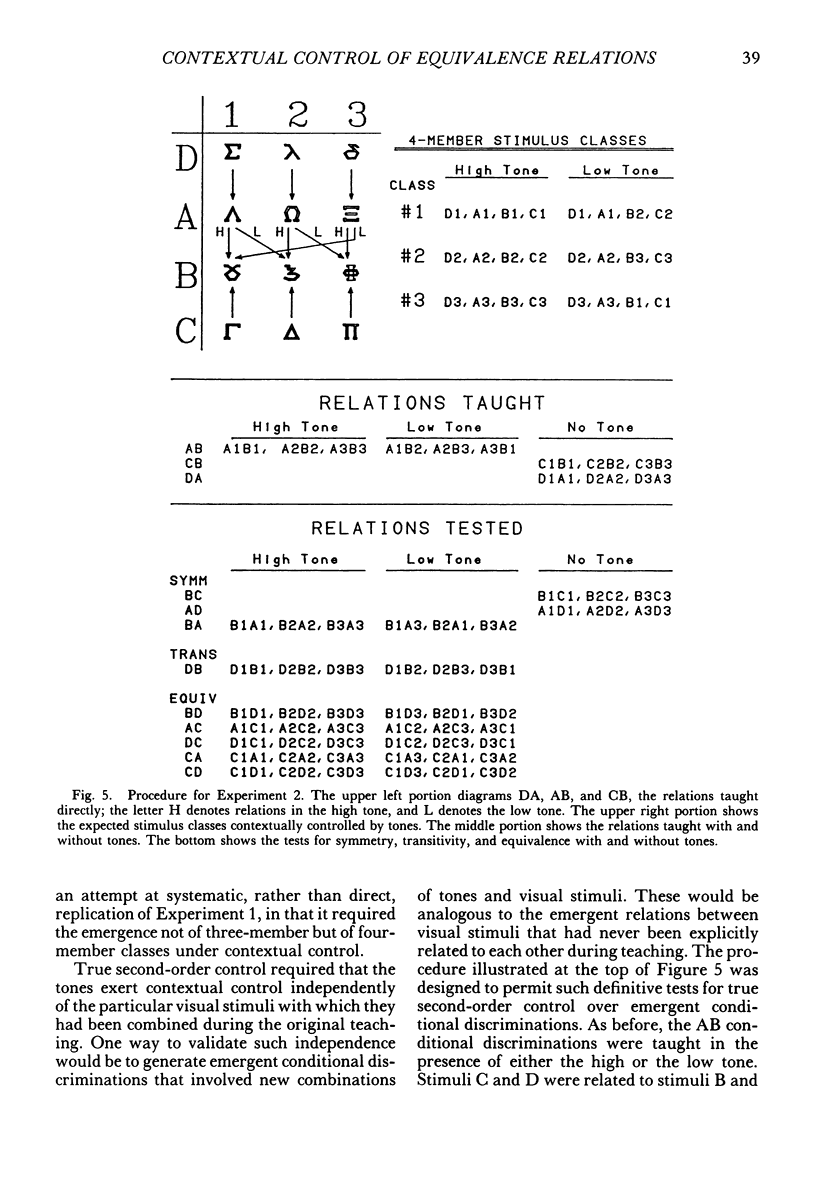

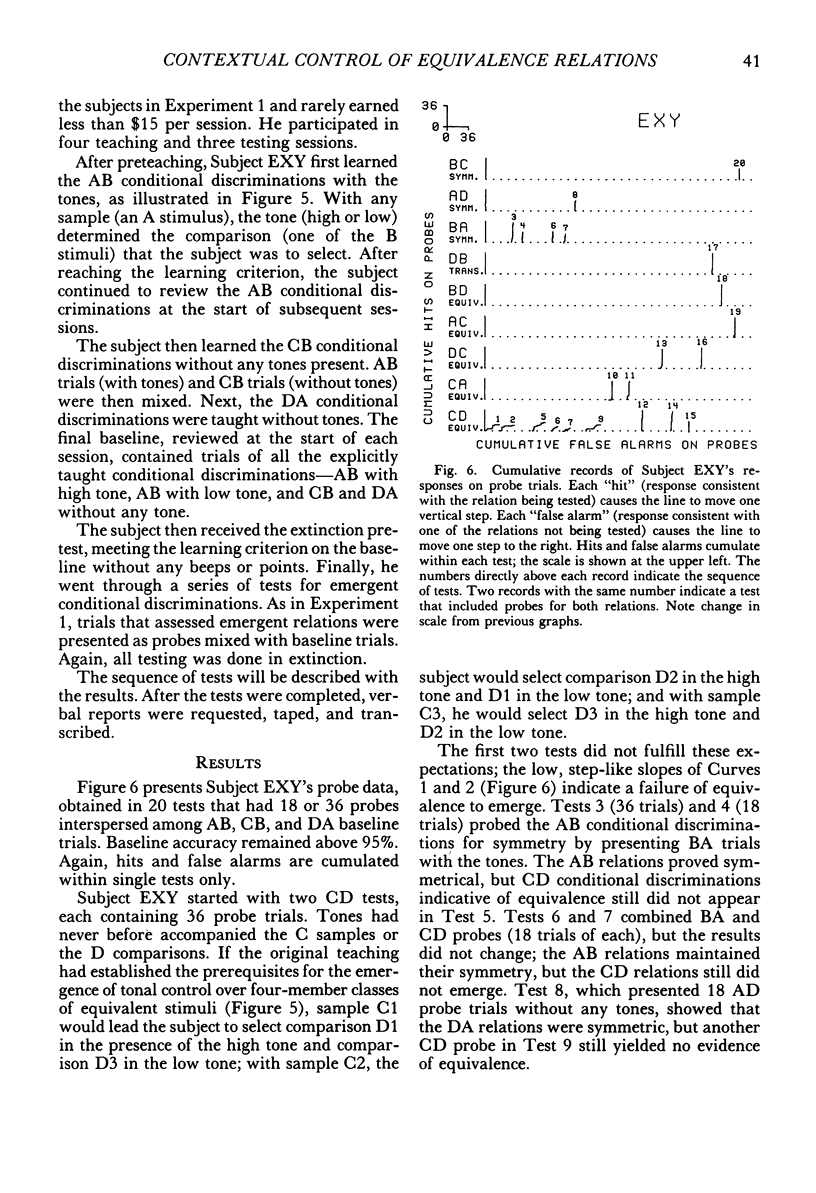
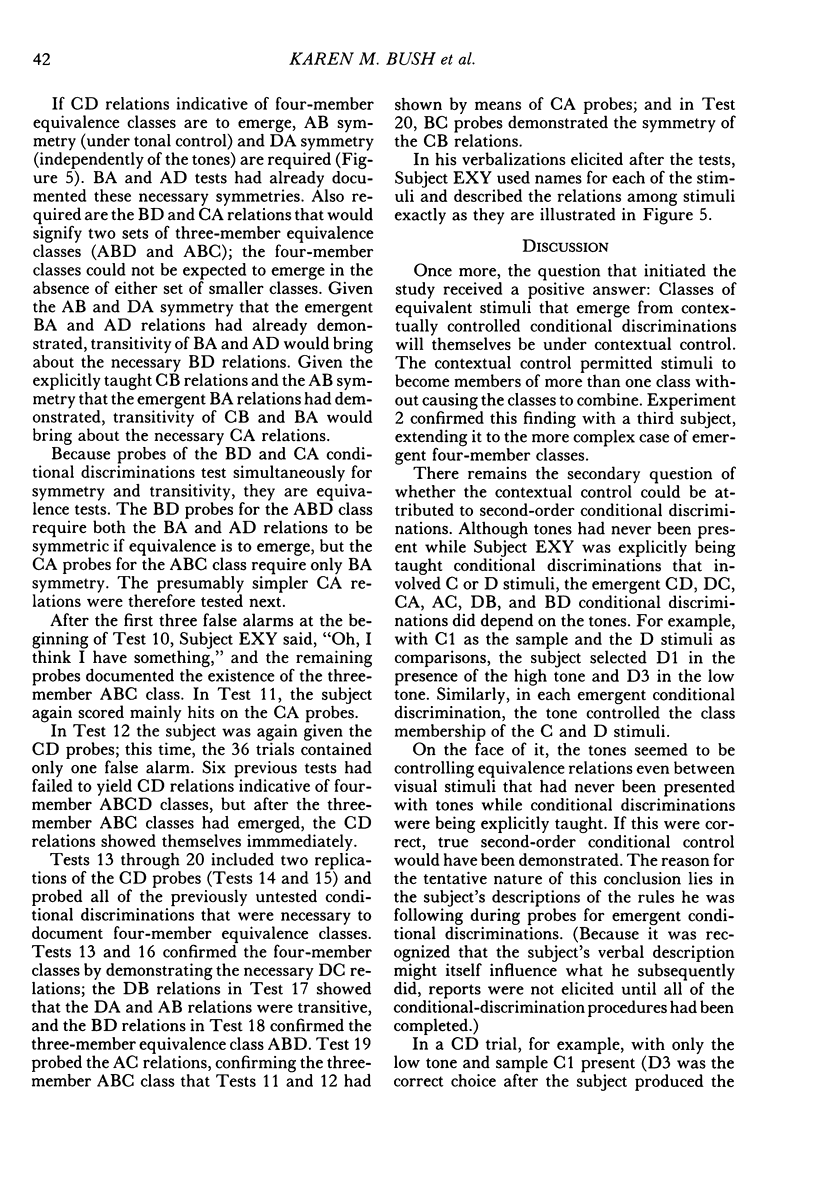
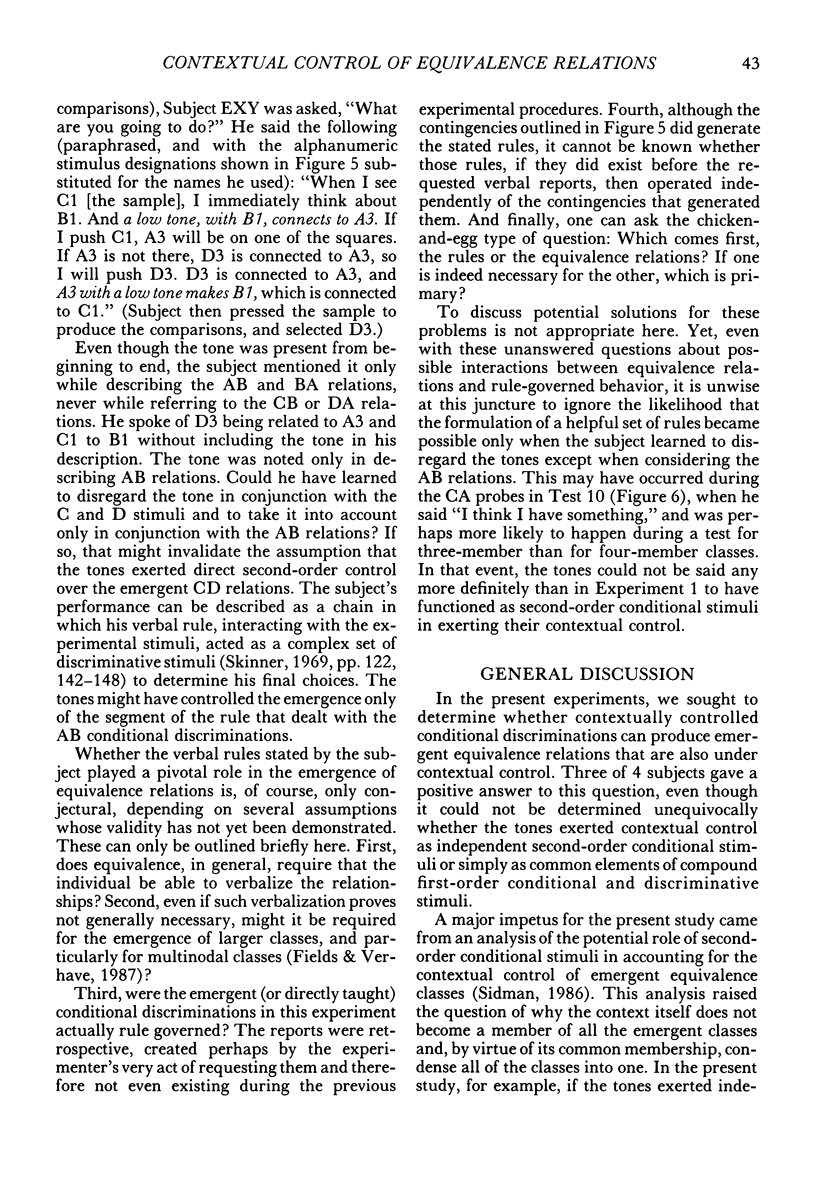


Selected References
These references are in PubMed. This may not be the complete list of references from this article.
- Devany J. M., Hayes S. C., Nelson R. O. Equivalence class formation in language-able and language-disabled children. J Exp Anal Behav. 1986 Nov;46(3):243–257. doi: 10.1901/jeab.1986.46-243. [DOI] [PMC free article] [PubMed] [Google Scholar]
- Dube W. V., McIlvane W. J., Mackay H. A., Stoddard L. T. Stimulus class membership established via stimulus-reinforcer relations. J Exp Anal Behav. 1987 Mar;47(2):159–175. doi: 10.1901/jeab.1987.47-159. [DOI] [PMC free article] [PubMed] [Google Scholar]
- Fields L., Verhave T. The structure of equivalence classes. J Exp Anal Behav. 1987 Sep;48(2):317–332. doi: 10.1901/jeab.1987.48-317. [DOI] [PMC free article] [PubMed] [Google Scholar]
- Lazar R. M., Davis-Lang D., Sanchez L. The formation of visual stimulus equivalences in children. J Exp Anal Behav. 1984 May;41(3):251–266. doi: 10.1901/jeab.1984.41-251. [DOI] [PMC free article] [PubMed] [Google Scholar]
- Lazar R. Extending sequence-class membership with matching to sample. J Exp Anal Behav. 1977 Mar;27(2):381–392. doi: 10.1901/jeab.1977.27-381. [DOI] [PMC free article] [PubMed] [Google Scholar]
- McDonagh E. C., McIlvane W. J., Stoddard L. T. Teaching coin equivalences via matching to sample. Appl Res Ment Retard. 1984;5(2):177–197. doi: 10.1016/s0270-3092(84)80001-6. [DOI] [PubMed] [Google Scholar]
- McIntire K. D., Cleary J., Thompson T. Conditional relations by monkeys: Reflexivity, symmetry, and transitivity. J Exp Anal Behav. 1987 May;47(3):279–285. doi: 10.1901/jeab.1987.47-279. [DOI] [PMC free article] [PubMed] [Google Scholar]
- Santi A. The role of physical identity of the sample and correct comparison stimulus in matching-to-sample paradigms. J Exp Anal Behav. 1978 May;29(3):511–516. doi: 10.1901/jeab.1978.29-511. [DOI] [PMC free article] [PubMed] [Google Scholar]
- Sidman M., Cresson O., Jr, Willson-Morris M. Acquisition of matching to sample via mediated transfer. J Exp Anal Behav. 1974 Sep;22(2):261–273. doi: 10.1901/jeab.1974.22-261. [DOI] [PMC free article] [PubMed] [Google Scholar]
- Sidman M., Kirk B., Willson-Morris M. Six-member stimulus classes generated by conditional-discrimination procedures. J Exp Anal Behav. 1985 Jan;43(1):21–42. doi: 10.1901/jeab.1985.43-21. [DOI] [PMC free article] [PubMed] [Google Scholar]
- Sidman M., Rauzin R., Lazar R., Cunningham S., Tailby W., Carrigan P. A search for symmetry in the conditional discriminations of rhesus monkeys, baboons, and children. J Exp Anal Behav. 1982 Jan;37(1):23–44. doi: 10.1901/jeab.1982.37-23. [DOI] [PMC free article] [PubMed] [Google Scholar]
- Sidman M., Tailby W. Conditional discrimination vs. matching to sample: an expansion of the testing paradigm. J Exp Anal Behav. 1982 Jan;37(1):5–22. doi: 10.1901/jeab.1982.37-5. [DOI] [PMC free article] [PubMed] [Google Scholar]
- Stromer R., Osborne J. G. Control of adolescents' arbitrary matching-to-sample by positive and negative stimulus relations. J Exp Anal Behav. 1982 May;37(3):329–348. doi: 10.1901/jeab.1982.37-329. [DOI] [PMC free article] [PubMed] [Google Scholar]
- Touchette P. E. Transfer of stimulus control: measuring the moment of transfer. J Exp Anal Behav. 1971 May;15(3):347–354. doi: 10.1901/jeab.1971.15-347. [DOI] [PMC free article] [PubMed] [Google Scholar]
- Wetherby B., Karlan G. R., Spradlin J. E. The development of derived stimulus relations through training in arbitrary-matching sequences. J Exp Anal Behav. 1983 Jul;40(1):69–78. doi: 10.1901/jeab.1983.40-69. [DOI] [PMC free article] [PubMed] [Google Scholar]


